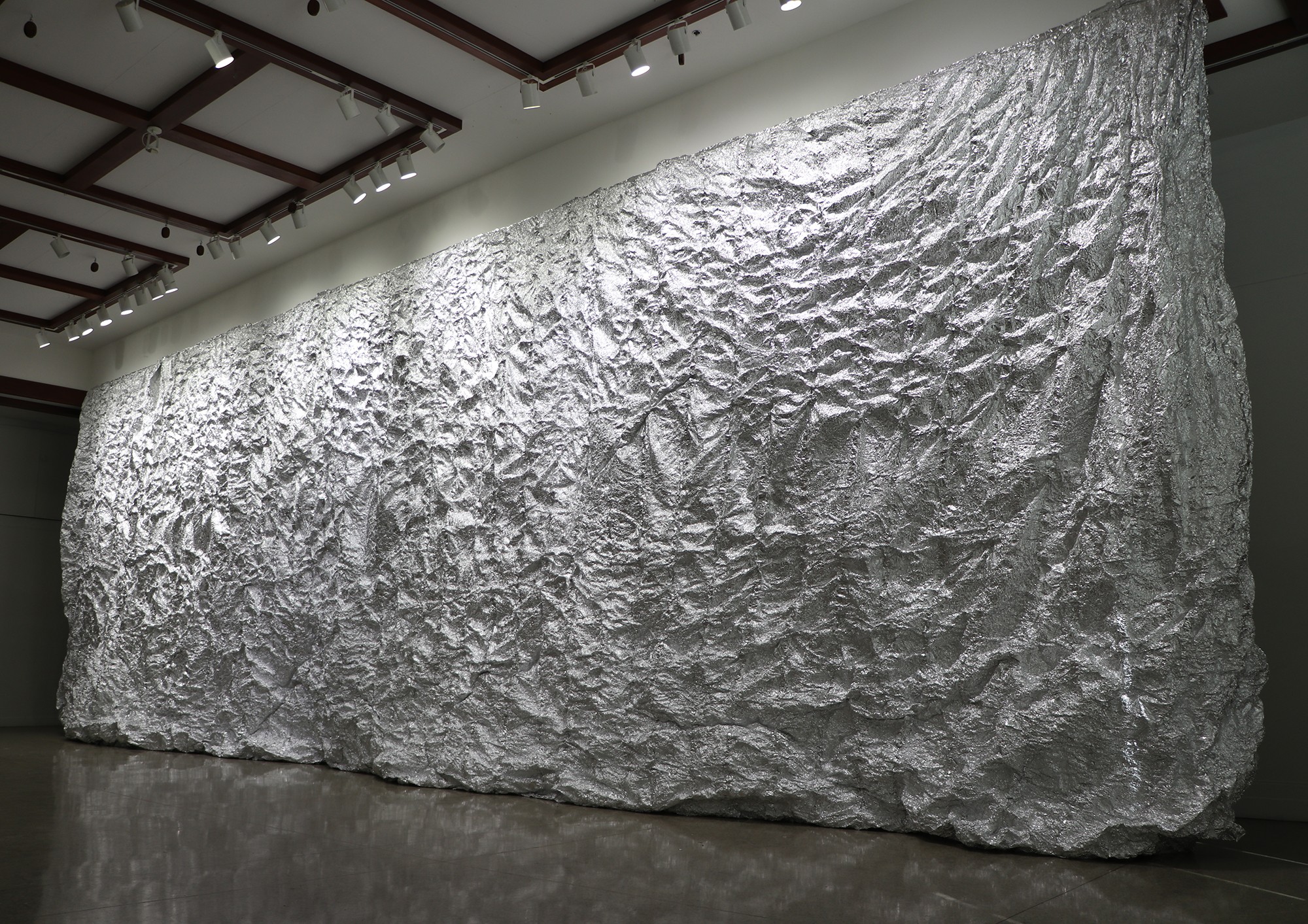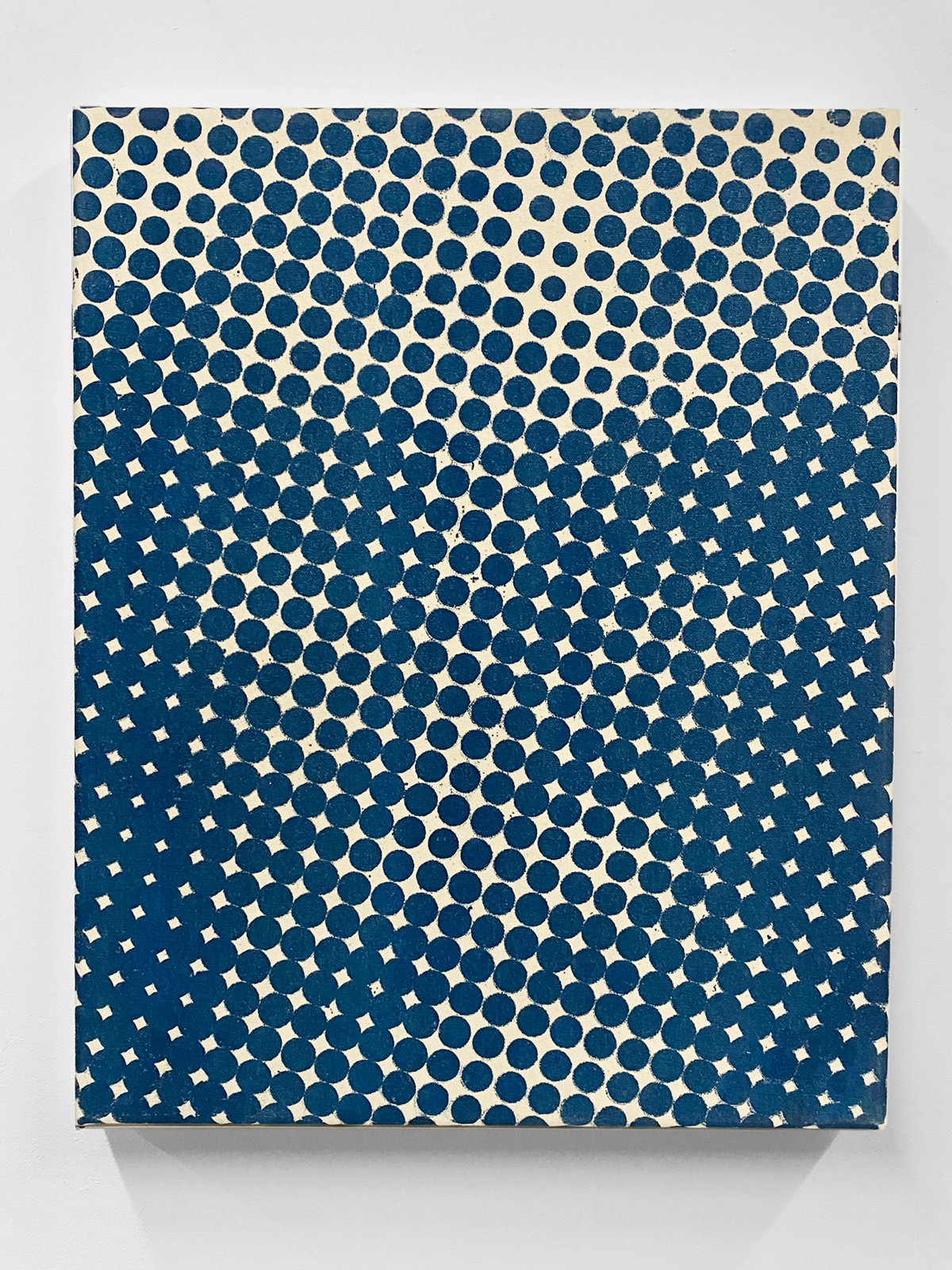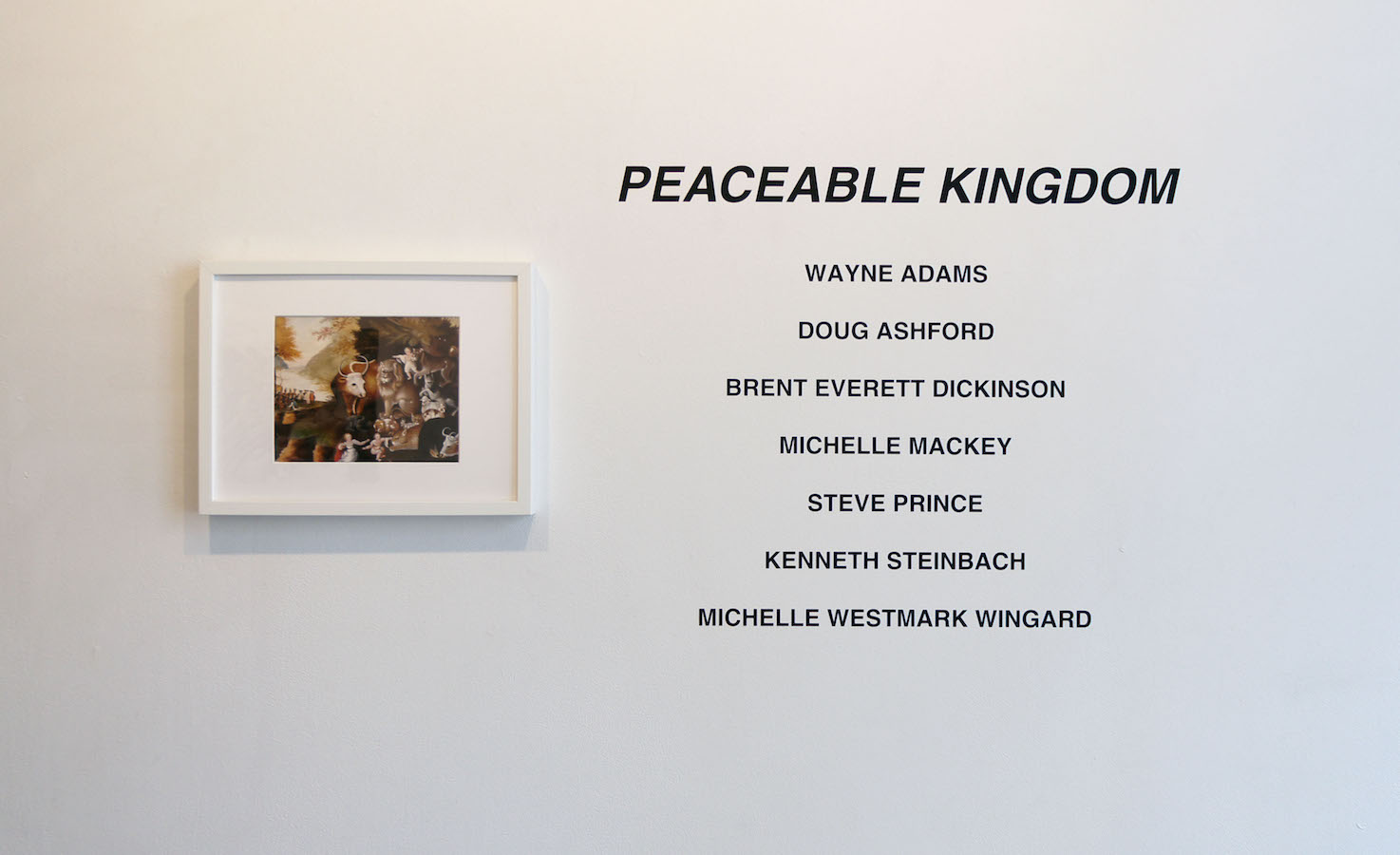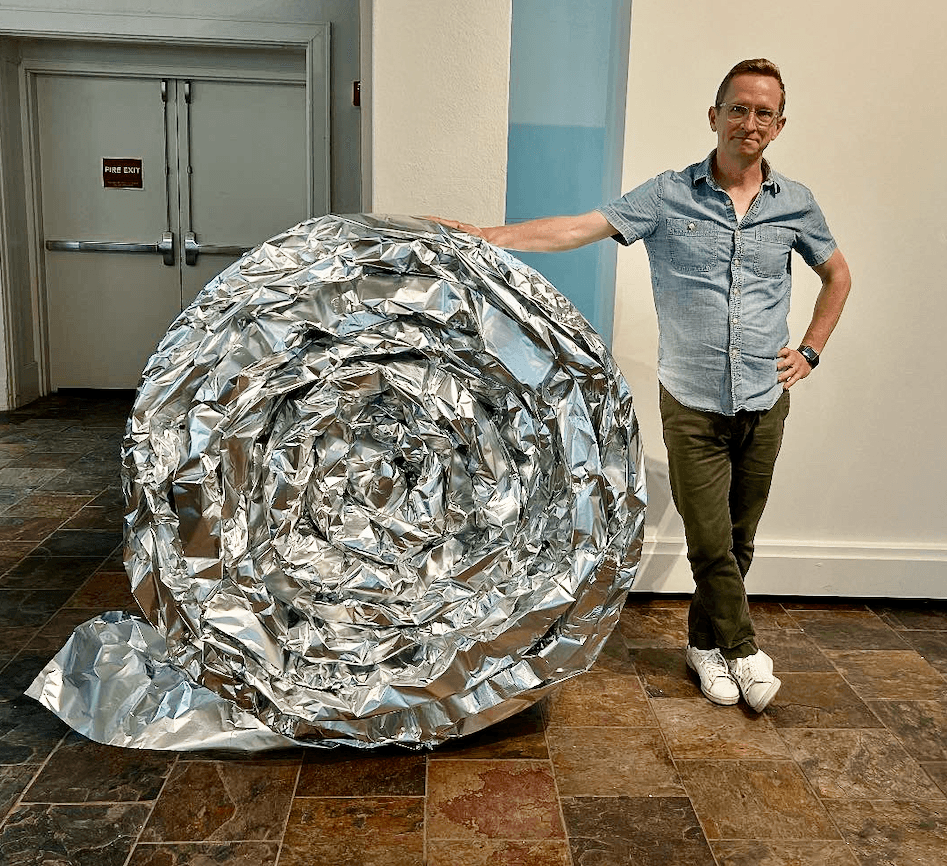Alright – so today we’ve got the honor of introducing you to Wayne Adams. We think you’ll enjoy our conversation, we’ve shared it below.
Alright, Wayne thanks for taking the time to share your stories and insights with us today. It’s always helpful to hear about times when someone’s had to take a risk – how did they think through the decision, why did they take the risk, and what ended up happening. We’d love to hear about a risk you’ve taken.
A few years ago, I had the opportunity to propose an art exhibition at my alma mater, Calvin College (now Calvin University). I had wanted to scale up my projects, doing more ambitious works and exhibitions and had never had a solo exhibition at Calvin since graduating. I ended up sending about ten options for the director to choose from and he selected an installation of aluminum foil to cover their long, fifty-six foot wall. I had never made a piece that large and was working in a makeshift studio in a tiny room in our house, which I still work from. It was a daunting project, but if I could pull it off, I thought it would be amazing.
The challenge was to fold together a single sheet of foil ninety feet long by twenty four feet high and do it in such a small studio space. I made a device to let me measure it out and fold two sheets together in five foot intervals and roll those up into a neat tube. Then, when I had two sheets together at ninety feet long, I would do two more until I had twelve pairs. I then used the same rig to fold and roll together five foot increments of those and so on until I eventually had a single, neatly rolled up and folded sheet of aluminum foil, like a giant accordion fan rolled up into a neat, sixty-pound cylinder.
Crating and shipping was another story, but suffice it to say that I was able to buy a wooden crate to fit the work and ship it from Brooklyn, NY to Grand Rapids, MI for a ridiculously cheap price. I booked my plane ticket, prayed FedEx wouldn’t destroy the work in transit and planned an entire week to install and repair any damage or fix problems with it in the installation. I had no idea how the install was going to turn out.
This was the risk. Doing all that work and stepping into the unknown to do something big and new that I hadn’t ever done on that scale and hoping all the planning and work would pan out was nerve racking. What if it ripped in two? What if it wouldn’t hold up? What if I was wrong about the strength of the seams? The artwork had the potential to be an epic failure, but I also knew that it would be amazing artwork to experience if I actually succeeded.
On the day I arrived in Michigan for the install, we had intended to uncrate and begin installing the next day, but the gallery director, Brent Williams, saw that I seemed nervous about it, so we went over to the gallery to open the crate and check it out. To my great surprise and relief, the roll wasn’t damaged in shipping and it unrolled easily. Fanning out the accordion went equally well and before we went to dinner, we had the sheet mostly unpacked and unfurled on the floor of the gallery. I was so relieved! It was an incredible feeling.
The process of working with Brent and a team of assistants to crinkle it up, roll it and unroll it into a single, giant cigar-shaped roll that we could then hang on the wall was an easy process. By the end of the first day of installation, we had the entire piece mounted to the wall and the only task left was to finish shaping it the way I wanted it to look and to light it. What I had blocked off an entire week for took all of two days! The risk was worth it and the reward certainly paid off. It really marked the beginning of this new series of large-scale installations and gave me courage to try new things and push myself harder. It also reinforced the idea that with discipline and perseverance, you can accomplish an incredible amount—even in tiny increments.

Great, appreciate you sharing that with us. Before we ask you to share more of your insights, can you take a moment to introduce yourself and how you got to where you are today to our readers.
I knew from when I was a child, growing up in a small town in Michigan, that I wanted to be an artist. Even though I didn’t have any art classes in grade school or high school, I drew constantly and always loved making things from whatever materials I could get ahold of. I actually had my first art classes in college, which is where my aspirations were confirmed. I got my BFA as an undergraduate at Calvin College and worked two years at various jobs while having a studio and making paintings after that. I got my MFA at Washington University in St. Louis.
After graduate school, I moved to New York City, where I knew I wanted to pursue being an artist, and I have lived in New York and worked in the IT industry to support that ever since. A very small percentage of artists actually make a living full-time from sales of their work, but I have found a job that provides time for me to make artwork and the environment of an art school to be around faculty, students and other artists.
My work ranges fairly widely, from abstract paintings to large installations of aluminum foil to various photo and video projects that appear from time to time. There is an underlying connection to religious belief and Christianity that runs through all of it to some degree. For me, it is an exploration of belief and doubt and how my practice of making can facilitate and expand my understanding while exploring materials and ways of making to create new conversations.

What do you find most rewarding about being a creative?
Overall, I think the most rewarding aspect of being an artist has been the community in relationships that I’ve had over the years. I’ve had the opportunity to participate in a couple arts organizations and critique groups, and I think those experiences stand out as extremely valuable. It’s an opportunity to talk with other people who have similar goals and ambitions, and it helps make an individual and often lonely pursuit have more meaning and community. I’ve learned so much from my friends who are also artists—been exposed to new ideas, techniques and artists I didn’t know before. It’s extremely valuable and often not appreciated until you realize you don’t have it.
A secondary aspect that has been extremely rewarding has been my own personal growth. For me, working in the studio as often a chance to work through my own questions and thoughts around an idea and I think it’s been helpful personally. But it’s also always connected in someway with community. Because what is the benefit of personal growth without then sharing it or participating in community with others?

How can we best help foster a strong, supportive environment for artists and creatives?
This is probably a reflection of where I am at in this moment, but my first thought on this is more personal than large-scale societal: collect the artwork of your friends and people in your community, whose work you like. Ask them to show you what they’re working on. Don’t assume you can’t afford it. Ask them about it and if you like their work, tell them you want a piece to own, to live with. I think people don’t realize how meaningful that can be for an artist. Often, I think people don’t realize also, how valuable it is to own an artwork made by someone you know or respect or even love. You see the piece hanging on your wall and it reminds you of that person. Also, don’t forget that you can often trade for artwork! I have a lot of art in our home that I traded with my friends and fellow artists. I’ve also traded services for art.
It sounds almost crass to say it, but despite the problems of capitalism and the relentless bombardment of ads, the simple act of supporting artists through purchasing their work can actually be quite meaningful and a huge encouragement to the artist. It’s also an opportunity to build a relationship, if you don’t already know the artist or maintain or develop an existing relationship in a new way. You get to talk about their artwork with them—often something that’s deeply meaningful to them and provide the experience of saying you want that around you, with you, in your home or office.
Contact Info:
- Website: https://www.wayneadamsstudio.com
- Instagram: @wayneadasstudio






